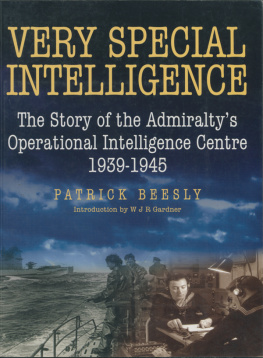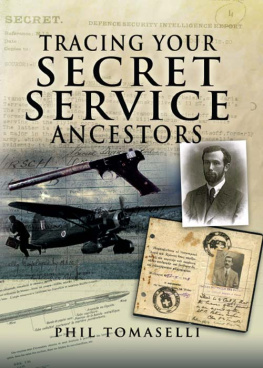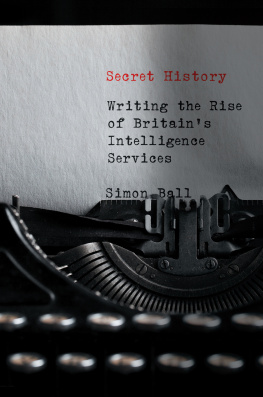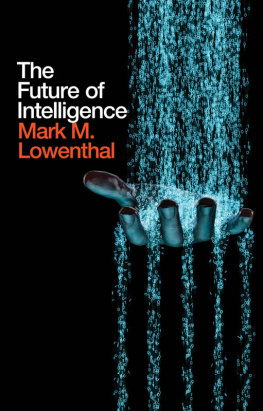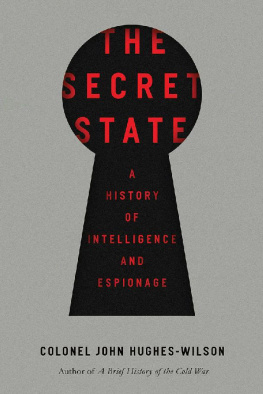MOST SECRET
AND
CONFIDENTIAL
CONTENTS
This book has been brought to publication by the generous assistance of Marguerite and Gerry Lenfest.
Naval Institute Press
291 Wood Road
Annapolis, MD 21402
2000 by Steven E. Maffeo
All rights reserved. No part of this book may be reproduced or utilized in any form or by any means, electronic or mechanical, including photocopying and recording, or by any information storage and retrieval system, without permission in writing from the publisher.
First Naval Institute Press paperback edition published in 2012.
ISBN: 978-1-61251-325-6
The Library of Congress has cataloged the hardcover edition as follows:
Maffeo, Steven E.
Most secret and confidential: intelligence in the Age of Nelson/Steven E. Maffeo.
p. cm.
Includes bibliographical references and index
1. Military intelligenceGreat BritainHistory18th century. 2. Military intelligenceGreat BritainHistory19th century. 3. Great Britain. Royal NavyHistory18th century. 4. Great Britain. Royal NavyHistory19th century. 5. Nelson, Horatio Nelson, Viscount, 17581805. 6. FranceHistoryRevolution, 17891799Naval operations, British. 7. Napoleonic Wars, 18001815Naval operations, British. 8. FranceHistoryRevolution, 17891799Military intelligenceGreat Britain. 9. Napoleonic Wars, 18001815Military intelligenceGreat Britain. I. Title.
VB231.G7 M34 2000 |
327.124109033dc21 | 99-048837 |
20 19 18 17 16 15 14 13 12 9 8 7 6 5 4 3 2 1
First printing
From The Eyes of the Fleet: A Popular History of the Frigates and Frigate Captains 17931815 by Anthony Price. 1990 by Anthony Price. Selected excerpts reprinted by permission of A. P. Watt, Ltd., Literary Agents, London, as well as W. W. Norton & Company, Inc., New York.
From Nelson the Commander by Captain Geoffrey Bennett, RN. 1972 by Geoffrey Bennett. Selected excerpts reprinted with the permission of Scribner, a Division of Simon & Schuster, New York, as well as the permission of the captains heir, Mr. Rodney M. Bennett.
From The Great Gamble by Dudley Pope. 1972 by The Ramage Co., Ltd. Grateful acknowledgment is given for the reprinting of selected excerpts.
From Dictionary of the Napoleonic Wars by David G. Chandler. 1979 by David G. Chandler. Selected excerpts reprinted with the permission of Professor Chandler.
From The Post Office in the Eighteenth Century: A Study in Administrative History by Kenneth Ellis. 1958 by The University of Durham. Selected excerpts reprinted with the permission of Oxford University Press.
From Nelson and the Nile: The Naval War against Bonaparte 1798 by Brian Lavery. 1998 by Brian Lavery. Selected excerpts reprinted with the permission of Brian Lavery and the Naval Institute Press.
From Lord Nelson by C. S. Forester. 1929 by C. S. Forester; renewed 1957. Selected excerpts reprinted with permission granted by Harold Matson, Co., Inc., as well as the permission of Peters Fraser & Dunlop Group, Ltd., London, on behalf of the Estate of C. S. Forester,
To my grandmother Lucille and grandfather Carmine, to my mother June and to my father Eugene, to my wife Rhonda, to my son Micah, and, inevitably, to C. S. Forester
MOST SECRET
AND
CONFIDENTIAL
Intelligence in the Age of Nelson
Steven E. Maffeo
NAVAL INSTITUTE PRESS
Annapolis, Maryland
This book has been brought to publication with the generous assistance of Marguerite and Gerry Lenfest.
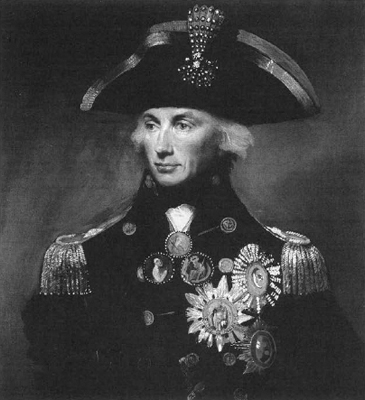
Horatio, Lord Nelson.
One of the most famous portraits of Nelson, done in 1798, by Lemuel Francis Abbott (17601803). Painted shortly after the Battle of the Nile, he is sitting in the regulation 1795 flag officers undress uniform. In an age in which decorations and medals were rare, Nelson had an unusual number. The diamond-studded aigrette, or chelengk, on his hat is also a decoration; it was received from the sultan of Turkey in recognition of the Nile battle.
National Maritime Museum, London
What was scattered in many volumes, and observed at several times by eyewitnesses, with no cursory pains I laid together, to save the reader a far longer travail of wandering through so many desert authors.
John Milton, preface to A Brief History of Muscovy, 1632
LIFES PLEASURABLE MOMENTS occur when we are requested to recognize an individual for superior performance. In this case, I am afforded the marvelous opportunity to introduce to you, the reader, a unique historical novel. The word novel was deliberately selected because this book reads like fascinating fiction, but factually stresses the principles of intelligence operations that are, historically and in contemporary times, critical to success.
That Cdr. Steven Maffeos work, which emanated from a masters degree thesis, has been selected for publication by the editorial board of the prestigious U.S. Naval Institute is an honor indeed. In their wisdom that board identified for publication a book that is a must read for not only civilian and military intelligence personnel, and those individuals interested in matters of intelligence, but alsodefinitelyoperators and warriors who must utilize intelligence to win in battle.
Maffeos book focuses on a special period of historyBritain and Europe in land and maritime struggles from roughly the 1770s to 1815. The central theme explores the ingenious methods of collecting, analyzing, and disseminating intelligence by the British and how it was delivered to their sea forces. Even more important, he examines how the warriors executed both strategy and tactics by comprehending and utilizing intelligence information. Battles were won or lost on those factors alone.
Maffeo has thoroughly researched an amazing number of primary and secondary documents, has incorporated a zeal for accuracy and correctness, and brought a style of writing that compels continued interest.
He presents considerable information about Vice Adm. Lord Horatio Nelson, that formidable figure who stands astride this immense geographic panoply and who was the epitome of acquiring intelligence and making bold decisions as a result of his comprehension of the information. More important, the author allows us each to learn and grasp more of history that will assist us in making very important contemporary decisions.
Cdr. Steven Maffeo, USNR, has earned my highest compliments and congratulations for producing a splendid work. He has served each of us well in his endeavors.
So, reader, move ahead smartlyabsorb, learn, enjoy!
REAR ADM. HOWARD ROOP (RET.)

IT WOULD BE INCONCEIVABLE for a modern naval commander to try operating without adequate access to accurate and timely intelligence. We take for granted the importance of good intelligence and its use in formulating our battle plans and all types of fleet operations and exercisesboth in peace and in war. At the same time, we give little thought to the historical evolution of the use of intelligence. Most of us have small appreciation for the importance that good intelligence has played in successful military and naval operations throughout history.
Commander Maffeos excellent and extremely well researched book helps us to understand how far we have come since the days of Vice Adm. Horatio Nelson and the great age of fighting sail. As in all professions, a better understanding of history, and where we have come from, will give the true intelligence professional a firm foundation and understanding of the importance and use of good intelligence. That particular history is the basis for most of the operations within the present intelligence profession.
Next page

